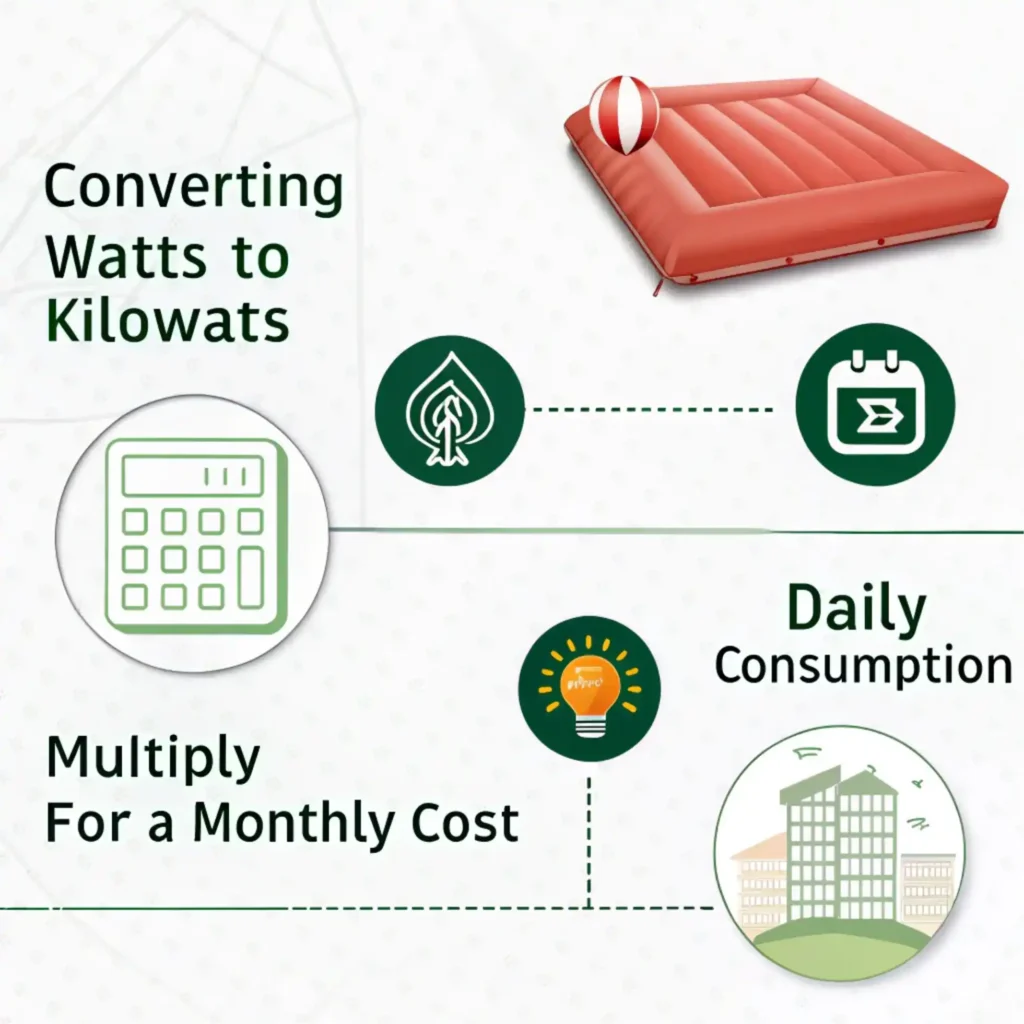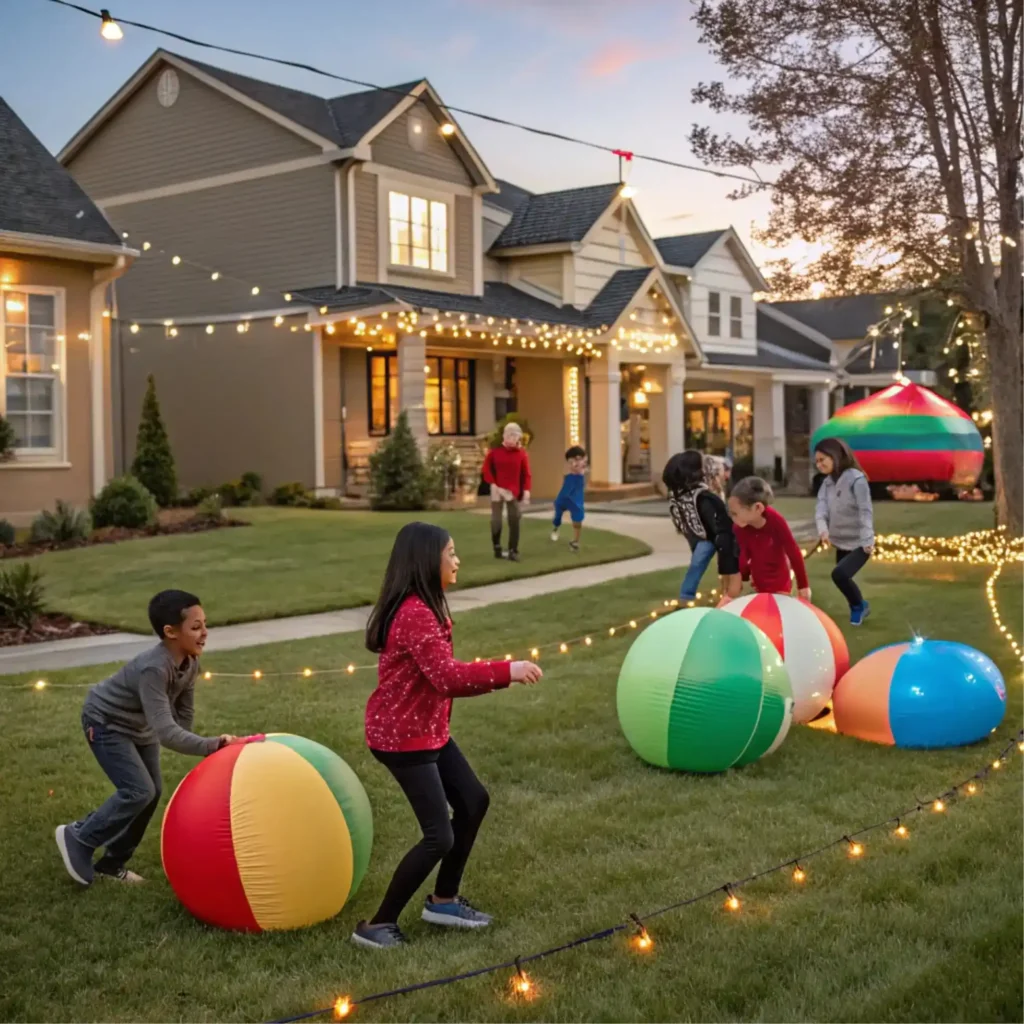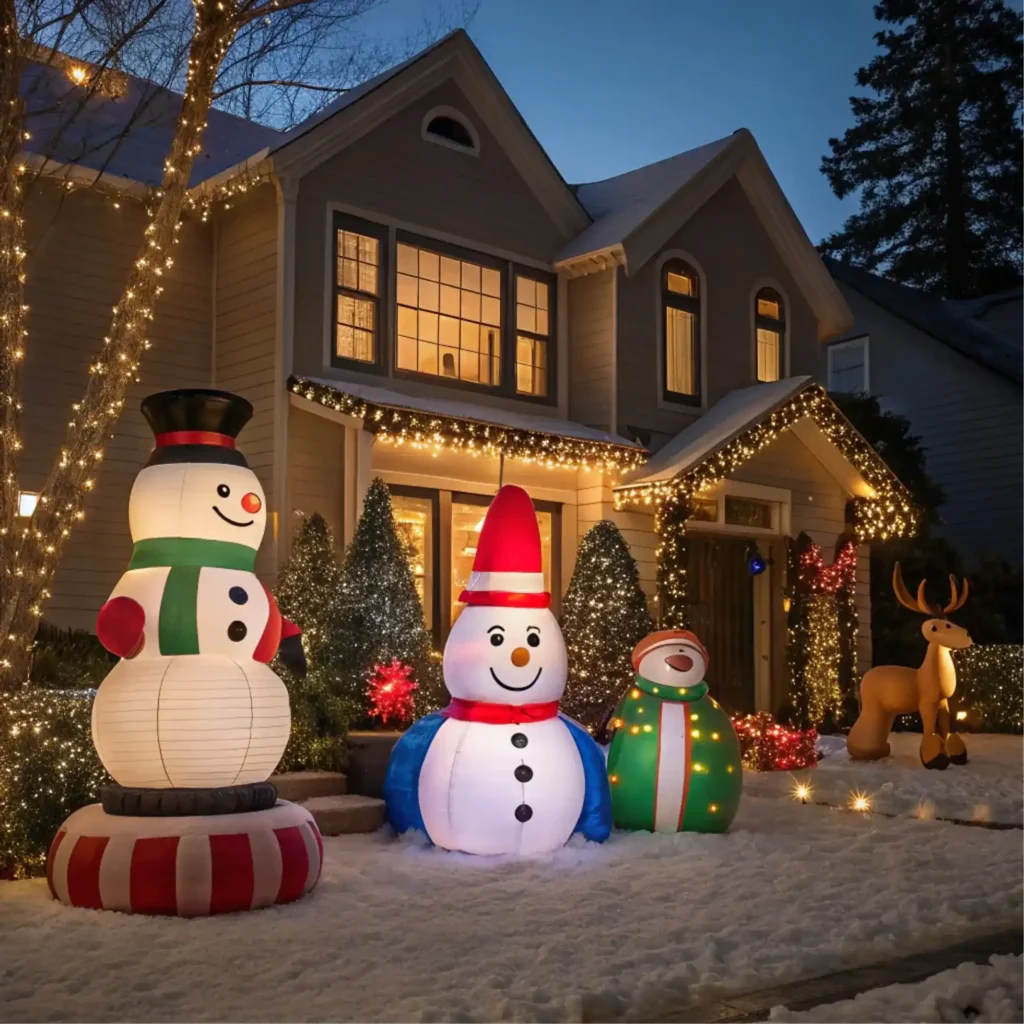How Much Electricity Do Inflatable Decorations Use?
From Christmas to New Year, most of us look forward to bringing out inflatable decorations for the house. These inflated decorations instantly transport magic into our neighbourhoods, ranging from cutesie front yard inflatables to elaborate, two-story, inflatable Christmas displays.
But one of our big questions is how much electricity these inflatables use. This article will explore inflatable decoration electricity consumption, power usage, cost considerations, and tips for low-effort energy-efficient decorating.
What are inflatable decorations?
Large production installations are large inflatable items that are easy to install in place and deflate. They appear in millions of forms, from the good old man culminating to the king of the season to snowmen, ghost-like forms, and pumpkins, among others.
Usually, these decorations are made from fabrics such as nylon or polyester, which are expected to be used outside.
Why Inflatable Christmas Decorations Are So Popular?
One of the biggest reasons for inflatable decorations’ popularity is their convenience. They Fit In A Short Amount Of Time—Rather than setting up complex decorations, inflatables can be inflated in minutes with a small electric fan.
Their convenience and attractive designs make them a popular choice for many households during the festive season.
How much Electricity inflatables Decoration use?

Inflatable Units and Their Power Requirements
The power of inflatable decorations ranges from low to high, depending on size and design. Most inflatables draw between 40 to 100 watts at maximum when inflated using household power supply volts.
For reference, the following is a simple breakdown:
Small Inflatable
- Minimum Dimension: 3 feet (914 mm)
- Maximum Dimension: 4 feet (1219 mm)
- Power Requirements: 40-60 watts
Medium Inflatable
- Minimum Dimension: 5 feet (1524 mm)
- Maximum Dimension: 6 feet (1828.8 mm)
- Power Requirements: 60-80 watts
Large Inflatable
- Power Requirements: 80-100 watts
- Minimum Dimension: 7 feet
- Maximum Dimension: 10 feet or higher
Calculating Energy Costs

If you want to know what these decorations cost you in electricity, we can do a simple calculation. Calculate the Cost like this if you run an inflatable decoration for 8 hours a day throughout the holiday season.
Find the wattage of your inflatable (for this example, we will say 80W).
80 W = 0.08 kW –> watts to kilowatts
Find daily consumption: 0.08 kW × 8 hours = 0.64 kWh/day
For usage: 0.64kWh ×30days = 19.2kWh /month
Calculation of Cost: If your electricity cost is 0.12 cents per kWh, then 19.2 kWh × $0.12 = $2.30 mite a month
This sum indicates that a few hours of daily use of an inflatable will only add a small amount to your electricity bill.
Inflatable Electricity Decorations & LED Lights
Further analysis of inflatable decorations’ energy usage can be completed by comparing them to one of the most famous forms of holiday illumination—LED lights. For instance, a 100-bulb LED light strand uses approximately ten watts of electricity.
To give a practical comparison, let us compare the energy usage of an inflatable decoration and a strand of LED lights that operated simultaneously. Here’s a simple comparison: Here’s a simple comparison:
- Inflatable Decoration
- Power Consumption: 80 watts
- Daily Use Duration: 0.64 kWh (kilowatt-hours)
- Monthly Cost: $2.30
- LED Lights
- Power Consumption: 10 watts
- Daily Use Duration: 0.08 kWh
- Monthly Cost: $0.29
When we add up the energy consumption of both types of decorations, the total power usage becomes:
- Total Power Consumption: 90 watts
- Total Daily Consumption: 0.72 kWh
- Total Monthly Bill: $2.59
In terms of overall energy usage, inflatable decorations consume slightly more power than a long strand of LED lights. However, the difference in cost is not significant, making both options relatively affordable for holiday displays.
How Much Electricity Does a Christmas Inflatable Use?
- Power Consumption Range: Most Christmas inflatables use between 50 to 200 watts per hour, depending on their size and features.
- Smaller Inflatables: Typically consume around 50-100 watts per hour.
- Larger or Animated Inflatables: May use 150-200 watts per hour or more due to added lighting and movement mechanisms.
- LED vs. Traditional Lighting: Inflatables with LED lights are more energy-efficient, reducing power consumption.
- Daily Energy Usage: If an inflatable runs for 6 hours daily, it might use approximately 0.3 to 1.2 kilowatt-hours (kWh), depending on wattage.
- Cost Estimate: At an average electricity rate of $0.12 per kWh, running an inflatable for 6 hours a day could cost $0.04 to $0.14 per day.
- Energy-Efficient Options: Look for inflatables labeled as energy-saving or with built-in timers to reduce electricity usage.
- Impact of Size: Larger inflatables with complex designs consume more power than smaller, simpler models.
Inflatable decorations can be polluters.

NOTE: This category is Energy Efficiency
Even though inflatable decorations are energy-friendly, we must consider the type of waste they make. Many are concerned with energy consumption during the holidays thanks to heightened awareness regarding the impact of carbon footprint among the clients. Here are some guidelines to make your inflatable use more environmentally friendly:
- Invest in timers: Set timers to limit the hours your inflatables are on, preventing them from consuming unnecessary electricity.
- Choose Solar-Powered Inflatables: Certain brands provide solar-powered inflatables that can help reduce energy consumption dramatically.
- Pick energy-saving ones: Some blowups are labeled as designed to use less power on the box.
The Role of Renewable Energy
With the world shifting towards sustainability, this holiday decorating trick can help leverage renewable energy sources. For example, going solar would eliminate energy bills from inflatables. Not only does this make you more cost-efficient in the long run, but it also lowers your dependency on fossil fuels.
Engaging with Your Community

Finding Joy in Decorating Together
Why should families decorate with inflatable decorations?
Inflatable decorations can add the perfect touch to your home, but they also have one essential aspect—they can be a fun activity for families and communities. Organize a neighborhood decorating competition or holiday gathering to flaunt your inflatables. It helps build community and starts conversations about energy use and sustainability.
Sharing Tips and Tricks
Talk about how to keep the inflatables while limiting energy costs with your neighbors. Create helpful content, like simple guides on calculating how much electricity your different decorations will use, so everyone else can make better decisions.
Christmas Decorations
As the holiday season approaches, it is advisable to utilize inflatable decorations in your festivities without impacting your electricity bill much. If you plan and get creative with your light display, you can still keep those smiles coming while remaining energy-conscious. Happy decorating!
Final Thoughts:
Irrespective of how you feel about inflatable decorations, a few things, like an inflatable decoration, bring a little joy and cheer to our homes or communities when the holidays come around.
They still use some power, but nothing you can’t handle–especially when compared to incandescent bulbs. However, suppose we are conscientious about using these decorations or looking for energy-saving options. In that case, there is no need to let the spooks down — it can be a lot of fun to have some inflatables in our yards without sending the electricity bill — or carbon footprint — into the stratosphere.
FAQs related to inflatable decorations and electricity usage;
Are inflatable decorations more of an energy suck than traditional Christmas lights?
While inflatable Christmas decorations burn more electricity than your average set of Christmas lights, the difference may be less substantial than many assume. A 100-bulb LED light strand uses about 10 watts, and a giant inflatable can use about 76 watts for 24 hours. Keeping an inflatable running all day, every day can cost you extra on your electric bill — more so if you have multiple inflatables.
How much does it cost to run an inflatable decoration?
If the inflatable takes 76 watts to run and you have it on for 12 hours a day throughout December, that would cost approximately $3.39 per month at 12 cents per kilowatt-hour.
How Much Electricity Do Inflatable Decorations Use?
Dimensions and shape: Larger inflatables need more power to run the internal blower that keeps these large apparatuses inflated.
Run time: The longer the inflatable is flying, the more electricity it will use.
Environmental surroundings: Harsh weather can impact the operational capacity of an inflatable shape and lead the blower to draw more power.
Is there a method to lower the electricity line in inflatable decorations?
- With timers, limit the hours your inflatables are on—for example, set them to run 5 hours a day instead of 12.
- Purchase inflatable models that are efficient in energy use and consume less power.
- Use Christmas lights and other decorations, as power consumption from an inflatable can add up quickly, especially if you decorate a larger area with several inflatables.
- Check your inflatables’ power consumption with a watt meter (a separate post on this is coming soon!) and adjust the time you run them accordingly.
Why Do My Yard Inflatable Decorations Keep Tripping Breakers — What Should I Do
- Do not use too many inflatables and lights to ensure they consume power within the limits of commonly available 15-amp circuits.
- Avoid touching the cords with wet hands, and don’t overload the extension cords with a power beyond which the breakers tend to kick in.
- Check your inflatables and cords for wear or damage because poor electrical equipment can create short circuits.
- Spread your inflatables over multiple outlets so as not to blow a circuit.
.

I’m Ian Welkins, and I am passionate about interior design and decor. I share expert insights to help you create stylish, functional spaces. Explore creative inspiration with me on Designing Aura.






